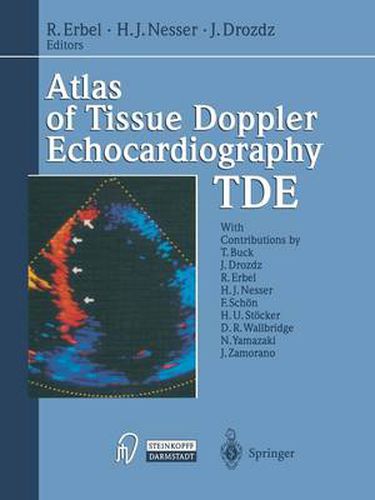Readings Newsletter
Become a Readings Member to make your shopping experience even easier.
Sign in or sign up for free!
You’re not far away from qualifying for FREE standard shipping within Australia
You’ve qualified for FREE standard shipping within Australia
The cart is loading…






This title is printed to order. This book may have been self-published. If so, we cannot guarantee the quality of the content. In the main most books will have gone through the editing process however some may not. We therefore suggest that you be aware of this before ordering this book. If in doubt check either the author or publisher’s details as we are unable to accept any returns unless they are faulty. Please contact us if you have any questions.
This is the first book to present an overview of the exciting new cardiac imaging technique of tissue Doppler echocardiography (TDE). In order to understand the background of this technique, it is necessary to compare the physical properties of blood, which reflects ultrasound poorly but moves with high velocity (up to 150 cm/s) with those of the myocar dium, which reflects ultrasound strongly but moves with low velocity (less than 10 cm/s). In tissue Doppler imaging, existing Doppler technology has been modified to bypass the high-pass filter and enhance calculation of low velocities, thus enabling selective visualization of the myocardium rather than of the blood. Because the color Doppler tissue images are super imposed on the conventional two-dimensional ultrasound images, this technique is known as TDE. Following a brief introduction, the history of ultrasound and Doppler imaging is presented. It is now about 150 years since the death of Christian Doppler, who described the Doppler effect, and more than 100 years since Pierre Curie discovered the piezoelectric effects of crystals. TDE was developed by Nobuo Yamazaki and Yoshitaka Mine at the Medi cal Engineering Laboratory, Toshiba Corporation, Tochigi, Japan. En gineers involved in the development of the technique have provided important technical information, which the reader will find an invaluable background to potential applications ofTDE.
$9.00 standard shipping within Australia
FREE standard shipping within Australia for orders over $100.00
Express & International shipping calculated at checkout
This title is printed to order. This book may have been self-published. If so, we cannot guarantee the quality of the content. In the main most books will have gone through the editing process however some may not. We therefore suggest that you be aware of this before ordering this book. If in doubt check either the author or publisher’s details as we are unable to accept any returns unless they are faulty. Please contact us if you have any questions.
This is the first book to present an overview of the exciting new cardiac imaging technique of tissue Doppler echocardiography (TDE). In order to understand the background of this technique, it is necessary to compare the physical properties of blood, which reflects ultrasound poorly but moves with high velocity (up to 150 cm/s) with those of the myocar dium, which reflects ultrasound strongly but moves with low velocity (less than 10 cm/s). In tissue Doppler imaging, existing Doppler technology has been modified to bypass the high-pass filter and enhance calculation of low velocities, thus enabling selective visualization of the myocardium rather than of the blood. Because the color Doppler tissue images are super imposed on the conventional two-dimensional ultrasound images, this technique is known as TDE. Following a brief introduction, the history of ultrasound and Doppler imaging is presented. It is now about 150 years since the death of Christian Doppler, who described the Doppler effect, and more than 100 years since Pierre Curie discovered the piezoelectric effects of crystals. TDE was developed by Nobuo Yamazaki and Yoshitaka Mine at the Medi cal Engineering Laboratory, Toshiba Corporation, Tochigi, Japan. En gineers involved in the development of the technique have provided important technical information, which the reader will find an invaluable background to potential applications ofTDE.